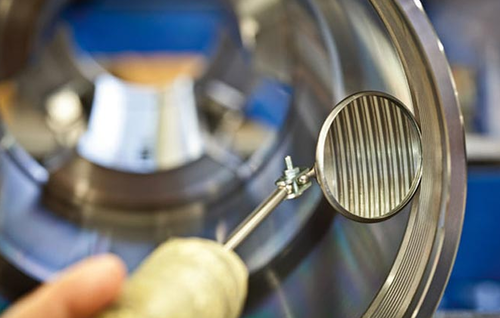Visual Testing

Visual Testing is the observation, either directly or indirectly (remotely), of a specimen by an Inspector in such a fashion as to determine the presence or absence of surface discontinuities or irregularities.
Best NDT Inspection Technologies Pte Ltd provides visual inspection services for castings, forgings, pipes and pipelines, structures, pressure vessels, boilers, storage tanks and power plants. Direct visual inspection applies proper lighting, measurement, and comparative tools with the experience of our qualified technicians to determine design compliance and conformance to drawings, codes and specification requirements
Advantage
- Inexpensive
- Highly portable
- Immediate results
- Minimum training
- Minimum part preparation
- Readily used on almost all materials
Visual inspection, with or without optical aids, is the original method of NDT. Many defects are surface-breaking and can be detected by careful direct visual inspection.
Optical aids include low-power magnifiers, microscopes, telescopes and also specialised devices such as boroscopes, endoscopes and other fibre-optic devices for the inspection of restricted access areas. These devices can also be used with television camera systems. Much of the success of visual inspection depends on the surface condition and the lighting arrangements. Surface preparation such as cleaning and etching is often used and also surface replicas can be taken for both macro- and microscopic examination. In-situ metallography is also possible.
High-speed visual inspection with automated output is used for the inspection of the surface of sheet material and television techniques may use enhanced image and pattern recognition methods. Remote photography of inaccessible surfaces, such as inside a radioactive environment, is also possible. High-speed cine is also used for studying fast events. Arrays of optical diodes can be used instead of television cameras.
